In Spanish, ‘Por Qué,’ ‘Porque,’ ‘Porqué,’ and ‘Por Que’ often mix up learners. They look alike but play different roles in sentences. For example, ‘Por Qué’ asks why something happens, and ‘Porque’ answers ‘why.’ These small differences matter a lot. They help you understand and communicate better. Imagine not getting these right, how would that mess up learning Spanish?
It’s like if you don’t grasp these subtleties, you’ll always be a bit off in conversations or writing. That’s why anyone serious about Spanish needs to nail these down. What do you think happens if you don’t?
Understanding the Basics
¿Por Qué? — “Why” (Interrogative)
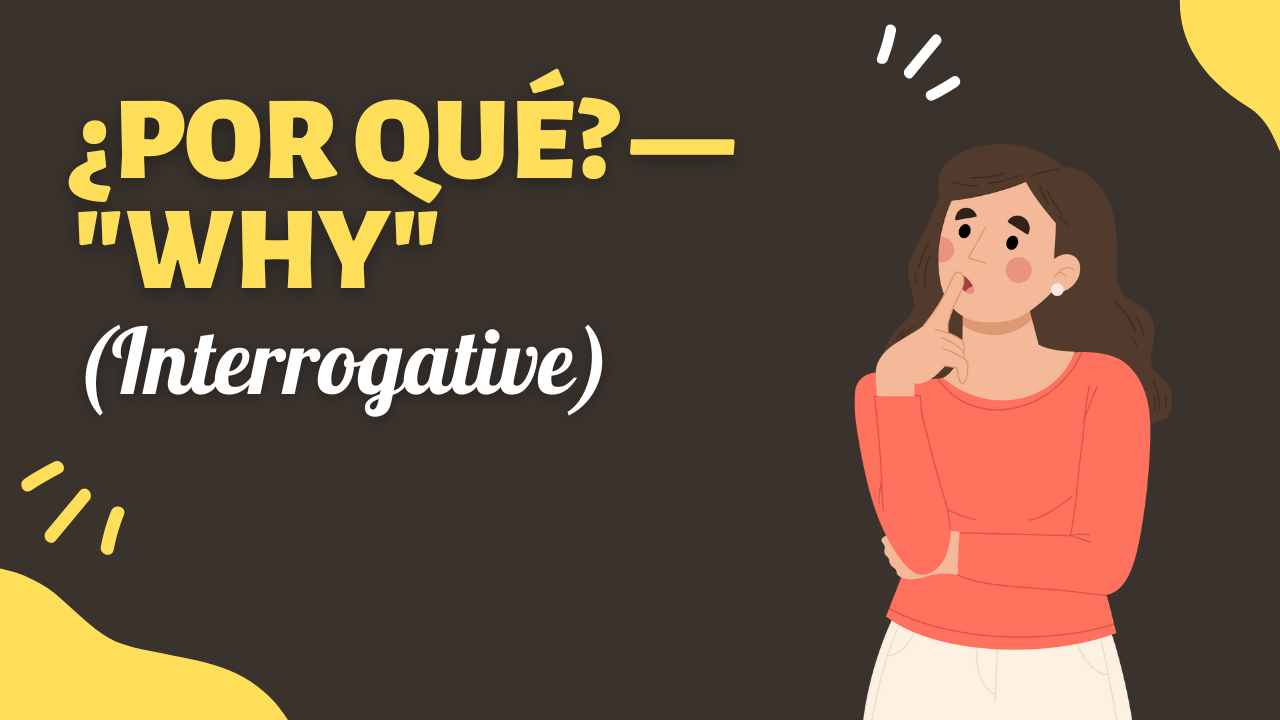
Why do we use ‘Por qué’ to ask questions in Spanish?
It’s simple. ‘Por qué’ means ‘why’ and helps us ask for reasons or explanations. It’s made of two parts: ‘por’ (a preposition) and ‘qué’ (means ‘what’ but turns into ‘why’ with the accent). In English, it works just like ‘why.’ Remember to put the accent on ‘qué’ to make it a question. When speaking, you’ll notice your voice goes up at the end of the question. This helps make it clear you’re asking something. For example, when you say, ‘¿Por qué estás triste?’ or ‘¿Por qué elegiste ese color?’ you’re asking someone why they’re sad or why they chose that color. It’s direct and straightforward.
Porque — “Because” (Conjunction)
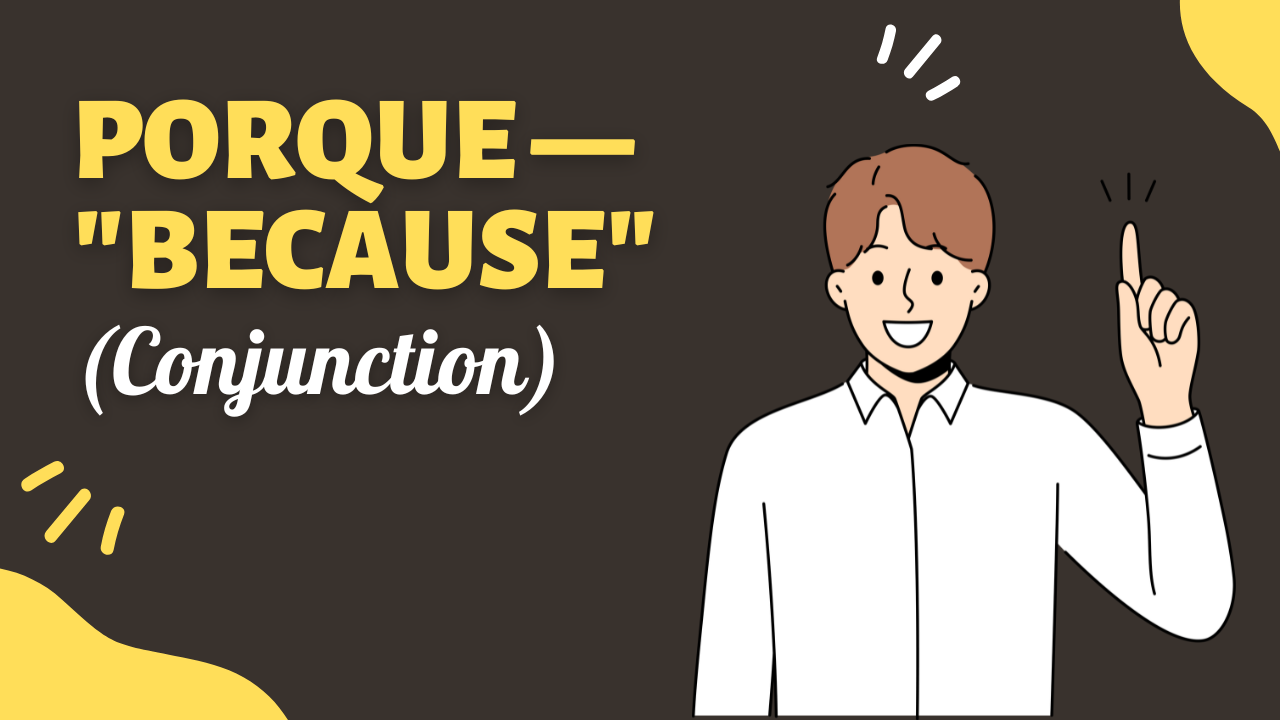
After looking at how ‘Por qué’ is used to ask for reasons in Spanish, let’s talk about ‘Porque.’ This word is a conjunction, which means it connects parts of a sentence. It’s like the English word ‘because.’
When someone asks a why question, you use ‘Porque’ to give the reason. For example, if someone asks, “Why aren’t you coming to the party?” you could answer, “Because I’m tired.” Using ‘Porque’ this way helps explain why things are the way they are, making it pretty important for clear communication in Spanish.
Por Qué — “For What Reason” (Interrogative Phrase)
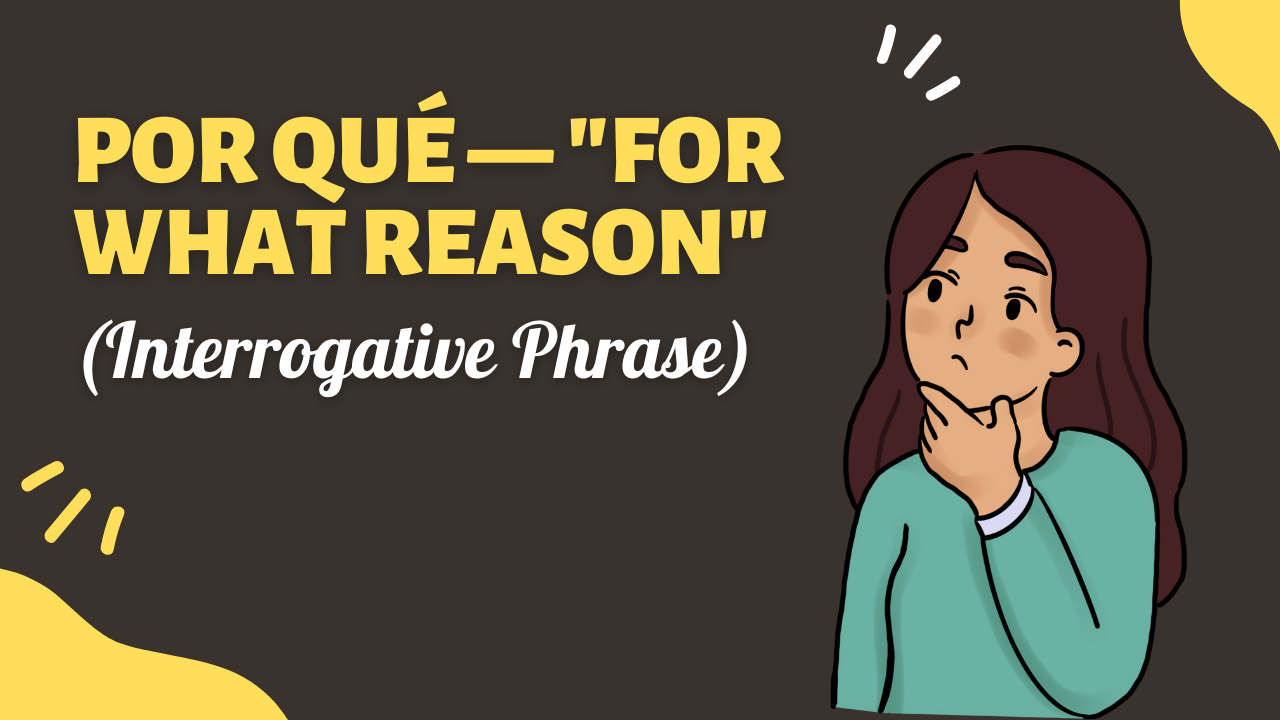
Understanding ‘Por qué,’ which means ‘for what reason’ in English, is key to asking about reasons or motives in Spanish. You use ‘Por qué’ in questions, both simple and complex, to find out why something happens. For example, you might ask ‘¿Por qué estás triste?’ (Why are you sad?) or say ‘I’d like to know why the project was delayed.’ This helps in everyday talk and deeper discussions, as it lets us get answers and understand situations better.
El Porqué — “The Reason” (Noun)
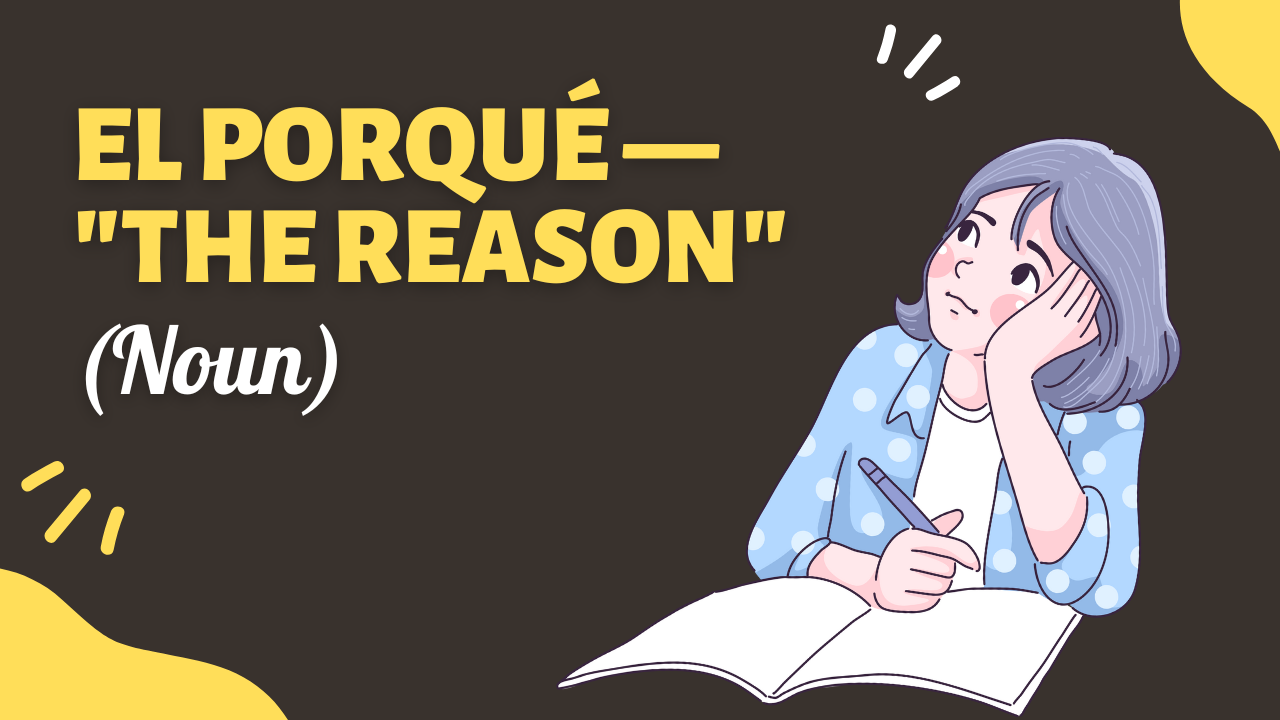
El porqué is a Spanish noun meaning the reason or cause behind something. It’s often used when digging into the deeper reasons or motivations behind events and decisions. You usually see it in more formal settings, like literature or academic discussions.
For example, if someone’s talking about ‘el porqué de una decisión política,’ they’re exploring the reasons behind a political action. Knowing el porqué helps anyone who wants to understand the deeper details or reasons, making it great for deep conversations, academic essays, or reports. It’s all about satisfying our curiosity and getting to the bottom of things.
Por Que — “For Which” (Relative Clause)
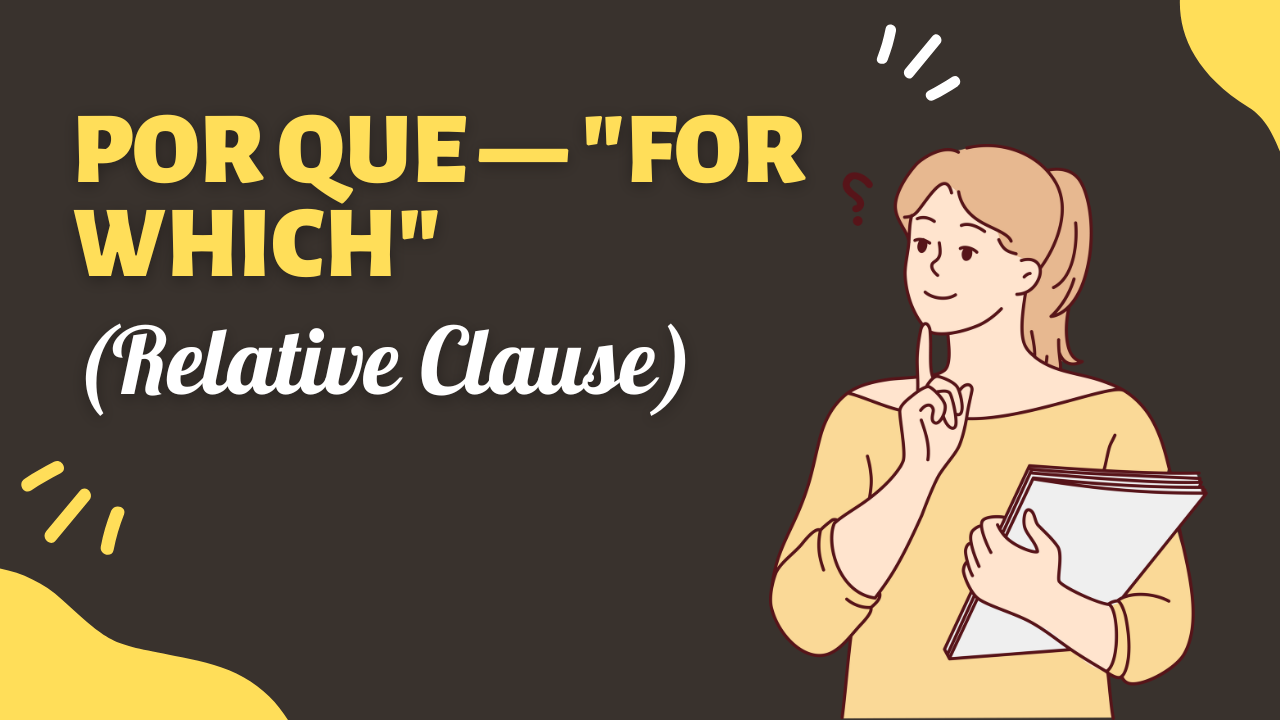
‘Por que’ is a key part of Spanish grammar. It’s used in sentences to say ‘for which.’ It combines ‘por’ (for) and ‘que’ (which). This helps link parts of a sentence together, explaining or giving reasons. For example, take the sentence ‘Esa es la razón por que no asistí,’ which means ‘That is the reason for which I did not attend.’ Here, ‘por que’ connects ‘the reason’ with not attending, showing why something happened. It’s really important to get this right if you want to build complex sentences in Spanish.
Also Read: The Difference Between Saber Vs. Conocer: A Simple Guide For Spanish Verbs
Practical Examples of Usage
¿Por Qué? in Questions
Knowing how to use ‘Por qué?’ in questions is key if you want to understand the finer points of asking why in Spanish. This phrase means ‘Why?’ and asks about reasons or motives. It combines the preposition ‘por’ with the question word ‘qué’, which has an accent on the ‘e’.
For instance, if you’re chatting with someone, you might ask, ‘¿Por qué estás triste?’ or ‘Why are you sad?’ In a more formal situation, you might hear, ‘¿Por qué decidió la compañía cambiar su estrategia?’ which means ‘Why did the company decide to change its strategy?’ Each time, you’re digging for answers, making ‘Por qué?’ a crucial part of speaking Spanish.
Porque in Responses
In Spanish, ‘porque’ is a key word when you need to explain why something happened or why you made a certain choice. It’s like saying ‘because’ in English.
So, if someone asks you, ‘Why didn’t you come to the meeting?’ you might answer, ‘I didn’t come because I was sick.’ Here, ‘porque’ helps you connect being sick with missing the meeting. It’s pretty straightforward, right?
Knowing how to use ‘porque’ can really help clear things up when you’re talking or writing in Spanish. It shows the reason behind something directly and simply.
Using Por Qué in Formal Inquiries
Using ‘por qué’ correctly is crucial in formal situations to get clear answers. It’s especially important in courts, academic research, and top-level business meetings where knowing the reasons behind actions or decisions is key.
For example, a lawyer might ask, “¿Por qué decidió terminar el contrato?” to find out why a contract was ended. In academic settings, a researcher might ask, “¿Por qué es relevante esta teoría?” to understand why a theory matters.
Using ‘por qué’ properly makes sure questions are straightforward and answers focus on the reasons, helping everyone understand the issue better.
El Porqué in Explanations
Building on the importance of clarity in formal inquiries using ‘por qué’, let’s now look at how ‘el porqué’ is used in explanations. ‘El porqué’ acts like a noun and means ‘the reason’ or ‘the cause’. For example, in a business environment, you might hear someone say, ‘Understanding the reason for the company’s restructuring is key to knowing what comes next in its development.’
Por Que in Complex Sentences
Using ‘por que’ in complex sentences adds depth to Spanish sentences. It’s crucial for linking clauses that explain why something is done or why it exists. For example, take the sentence: ‘There’s a reason I can’t make it to the meeting.’ Here, ‘por que’ connects the main idea to the reason behind it. Similarly, in ‘That’s the topic I wrote the article about,’ ‘por que’ links the action to its motivation.
Common Mistakes to Avoid
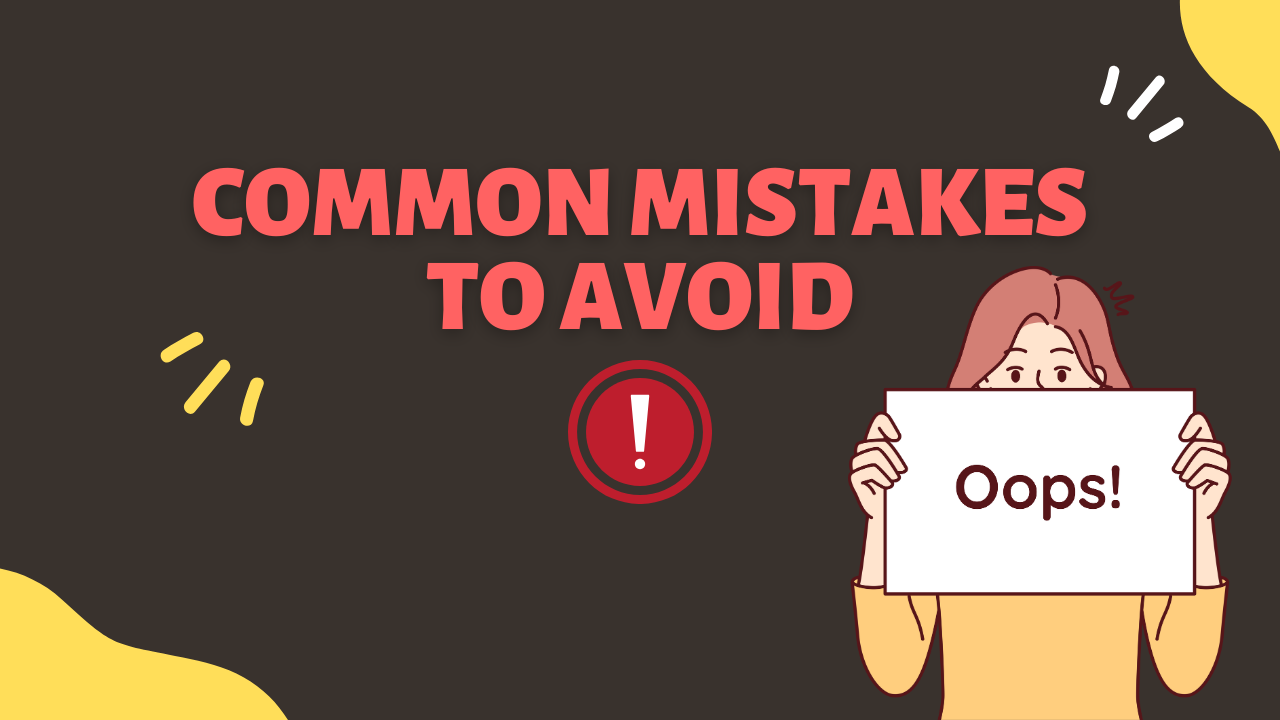
Confusing ¿Por Qué? and Porque
Many people learning Spanish get mixed up between ‘¿Por qué?’ and ‘Porque.’ It’s a common mistake that can really change the meaning of what you’re trying to say. You use ‘¿Por qué?’ when you want to ask someone ‘Why?’ For instance, you might ask, ‘¿Por qué estudias español?’ which means ‘Why do you study Spanish?’
On the other hand, ‘Porque’ is how you answer that question. It means ‘because.’ So, if someone asks you why you study Spanish, you could reply, ‘Porque es útil para mi carrera,’ translating to ‘Because it’s useful for my career.’
Getting these two straight is really important. It helps you avoid confusion and makes your communication clear.
Also Read: The Four Seasons In Spanish: Here’s Everything You Need To Know
Misusing El Porqué for Por Que
Many Spanish learners mix up ‘el porqué’ with ‘por que’. ‘El porqué’ is like saying ‘the reason’ in English. You’d use it when you’re talking about why something happened. For example, if you’re puzzled about why someone made a certain choice, you might say, ‘El porqué de su decisión aún es un misterio’, which means ‘The reason for his decision is still a mystery.’
On the other hand, ‘por que’ is used in a part of a sentence that gives more information about something mentioned earlier. It’s similar to saying ‘for which’ in English. So, if you’re explaining complicated reasons why someone didn’t show up, you might say, ‘Las razones por que no asistió son complicadas’, which translates to ‘The reasons for which he did not attend are complicated.’ Mixing these up can really throw off your Spanish. So it’s good to keep them straight!
Conclusion
To sum it up, getting the hang of ‘por qué,’ ‘porque,’ ‘porqué,’ and ‘por que’ really helps when you’re speaking or writing in Spanish. Each of these terms has its own role to play in a sentence, whether you’re asking a question, giving an answer, explaining something, or connecting ideas. If you use them right, your Spanish will be clearer and more precise. This makes your conversations and writing not only more effective but also more engaging. Keep visiting the Translation Blog for more translations.

